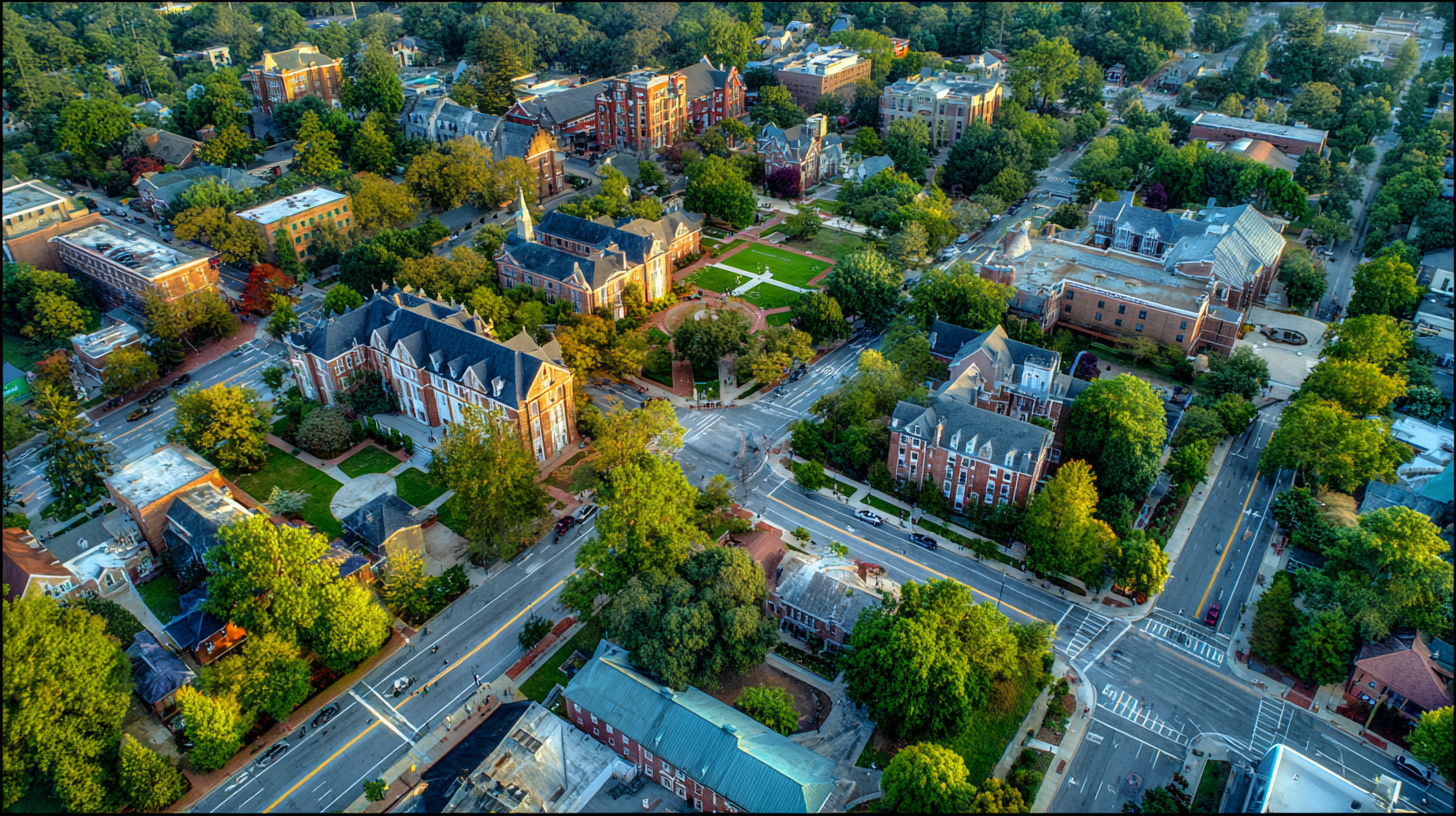Columbia keeps showing up on shortlists for people who crave a balanced lifestyle. The lively downtown scene, wide green spaces, a reasonable cost of living—those are easy to see. The school scene takes a little more digging. If you want to feel good about where learners will spend most of their weekday hours, stick around. You’re about to meet six campuses locals mention again and again whenever the phrase “best schools in and around Columbia” pops up in conversation.
Not every household looks for the same thing in a classroom or a campus. Some folks chase college-prep results. Others light up at the mention of robotics, marching band, or art studios. A few just want proof that teachers know every child’s name before Halloween. You might want the whole package. Let’s take a tour. When one of these schools grabs your attention, picture the surrounding neighborhood and imagine yourself pulling into that driveway every evening. See if it fits.
Why school quality matters when you buy
Property value and classroom performance tend to rise and fall together. A consistently high-scoring school zone often lifts resale potential. Future buyers notice test results, graduation rates, and after-school offerings, even if they have zero kids in tow. Strong campuses also draw civic investment: refreshed sidewalks, sports fields, better municipal services, and more local pride.
So yes, the district map is worth studying before you sign a contract. Think of it as an extra layer of due diligence—just like an inspection or an appraisal. That extra homework now could spare you second-guessing later.
Rock Bridge High: Big campus, bigger dreams
Walk the halls and you will hear ambition humming. Rock Bridge High School sits on the south side of town and regularly lands in statewide rankings for college readiness. A heavy catalog of Advanced Placement classes sits on the menu. Students lean hard into STEM coursework, thanks to renovated science labs and teachers who push beyond the textbook.
The numbers back it up. Graduation rates clear the Missouri average by a comfortable margin. ACT scores follow the same trend line. Alumni scatter to flagship universities as well as smaller liberal-arts colleges, leaving a trail of scholarship letters in every direction.
Rock Bridge is not only grades and graphs. The marching band fills fall nights with brass. Theater productions draw standing-room crowds more than once a year. And if you are counting state championship banners, the track team keeps adding to the wall. Academic muscle meets creative spark meets athletic grit. Hard to fake that combo.
Hickman High: Tradition with a twist
Hickman opened its doors more than a century ago, and you can feel the history the second you step onto the front lawn. The building still respects its roots yet refuses to stand still. An International Baccalaureate program sits at the core. That label translates to rigorous essays, global themes, and lab hours that prepare teens for a college lecture hall.
Dual-credit partnerships with the University of Missouri let juniors and seniors grab university hours without leaving the parking lot. Numbers again tell a solid story. Average ACT results keep nudging upward. Scholarship totals climb most years. And the staff roster is stacked with National Board Certified teachers who refuse to coast.
Hickman’s downtown spot gives students quick access to art galleries, tech meetups, and volunteer gigs. Those off-campus experiences sneak real-world flavor into day-to-day lessons. The old-school limestone facade may fool you. Open the door and you step into modern education.
Battle High: Where energy turns into action
Battle High is the new kid among Columbia’s big three public high schools. That youth brings fresh facilities and a bold culture. Walk into the media center and you will bump into 3D printers and podcast stations. The robotics squad keeps the gear warm year-round, not just in competition season.
Sports fans show up early in blue and silver. Football, basketball, and wrestling teams already have district titles under their belts, even with a short history. Leadership programs challenge students to plan charity drives, run pep assemblies, and navigate real responsibility. Clubs span anime to agriculture. You name a niche, Battle likely has a place for it.
Academic benchmarks hold steady with state standards, yet the administration talks more about growth than raw scores. Teachers track personal bests, not just final numbers. That growth mindset spills over into pep rallies, group projects, and hallway murals. Visitors notice the buzz.
Columbia Independent: The smaller-school advantage
Tucked a mile north of the University of Missouri campus, Columbia Independent School—often shortened to CIS—delivers a different vibe. Small enrollment means the morning drop-off feels less like a traffic snarl and more like a neighbor waving you into the drive. The average class hovers around a dozen students. Teachers know when someone is coasting and nudge them back on track.
World languages jump out on the schedule. Students start Mandarin or Spanish years before most public-school peers crack open an intro workbook. Debate and Model United Nations teams carry home trophies from regional circuits. College counseling begins early, guiding families through campus visits, essay drafts, and scholarship forms long before deadlines become emergencies.
Fine arts never play second fiddle. The visual arts studio hands out oil pastels one day then invites a visiting sculptor the next. Spring musicals play to sold-out houses in the black-box theater. Graduates scatter from Ivy League lecture halls to conservatories to start-ups in every time zone. Small but mighty.
Grant Elementary: A lively launchpad
Grant Elementary sits under tall maples only a few blocks west of Columbia’s courthouse square. The building itself looks like a storybook schoolhouse yet inside you find smartboards, makerspace carts, and reading nooks built for wiggle room. Teachers lean into project-based learning. Second graders might plant herbs in raised beds while calculating soil depth. Fifth graders code tiny bots to trace Missouri river routes.
The parent-teacher organization is not a sleepy committee. Volunteers organize book fairs, bike-to-school days, and Friday morning coffee for anyone who wants to swap supply-list hacks. Attendance at curriculum nights rarely dips. Test scores land above the district mean in reading and run neck-and-neck in math. More important than numbers, children show up curious and leave confident. That narrative repeats year after year.
Mill Creek Elementary: Learning among the trees
Drive southwest past Cosmo Park and you will land at Mill Creek Elementary. The campus footprint sits beside a wooded greenbelt, so science teachers sneak quick walks to identify leaf patterns or track water runoff after a storm. That outdoor lab perks up a standard unit in a way a worksheet never could.
Inside, the buzzword is collaboration. Flexible seating, project corners, and peer-review walls fill the classrooms. Teachers post learning goals at eye level and model how to revise them when a concept clicks early or stalls out. Students absorb that habit fast. By winter break most can articulate what they want to master next, whether that is long division or persuasive paragraphs.
Community programs run thick. A harvest festival in October brings food trucks, craft tables, and a dunk tank starring a brave principal. Winter coat drives pack the gym with donations. The building stays lit long after dismissal thanks to chess club, art explorers, and intramural hoops. Many residents joke that Mill Creek is the neighborhood’s unofficial town square.
How to pick the right campus for your crew
Visit during a regular school day
- Call the office, request a tour, and show up when hallways hum. Nothing beats eavesdropping on a live lesson.
Talk to teachers
- Ask how they measure progress. Not just grades. Growth, attitude, teamwork. Their answers reveal priorities.
Check extracurricular calendars
- Scan the range. Does the lineup match the passions in your household? Or will you spend evenings driving across town for club practice?
Map the commute
- Google Maps can mislead at rush hour. Test the drive yourself around 7:30 a.m. and 3:00 p.m. Gauge the vibe and the traffic lights.
Read school board minutes
- Boring? Maybe. Yet a quick skim shows budget moves, curriculum debates, and community support. You learn what headlines miss.
Interview current families
- Shoot for variety. Parents with fourth graders notice different things than parents with seniors. Collect a wide sample.
Trust your gut
Head knowledge helps, yet your instincts often seal the choice. If you leave a tour grinning, pay attention.
Curious to see these neighborhoods in real life?
Digital research gets you halfway. Walking the block finishes the picture. When you feel ready, reach out. My team keeps keys and schedules flexible so you can slip into open houses near any of the campuses above. You will see porch styles, yard sizes, and everyday traffic patterns—details Zillow photos skip. Bring a list of non-negotiables, bring your questions, and yes, bring comfortable shoes.
You deserve a home base that feels right and a school that lifts ambitions. Columbia offers both. With the right guidance, the search becomes less stressful and a lot more rewarding. Let’s start that conversation and get you closer to move-in day.






